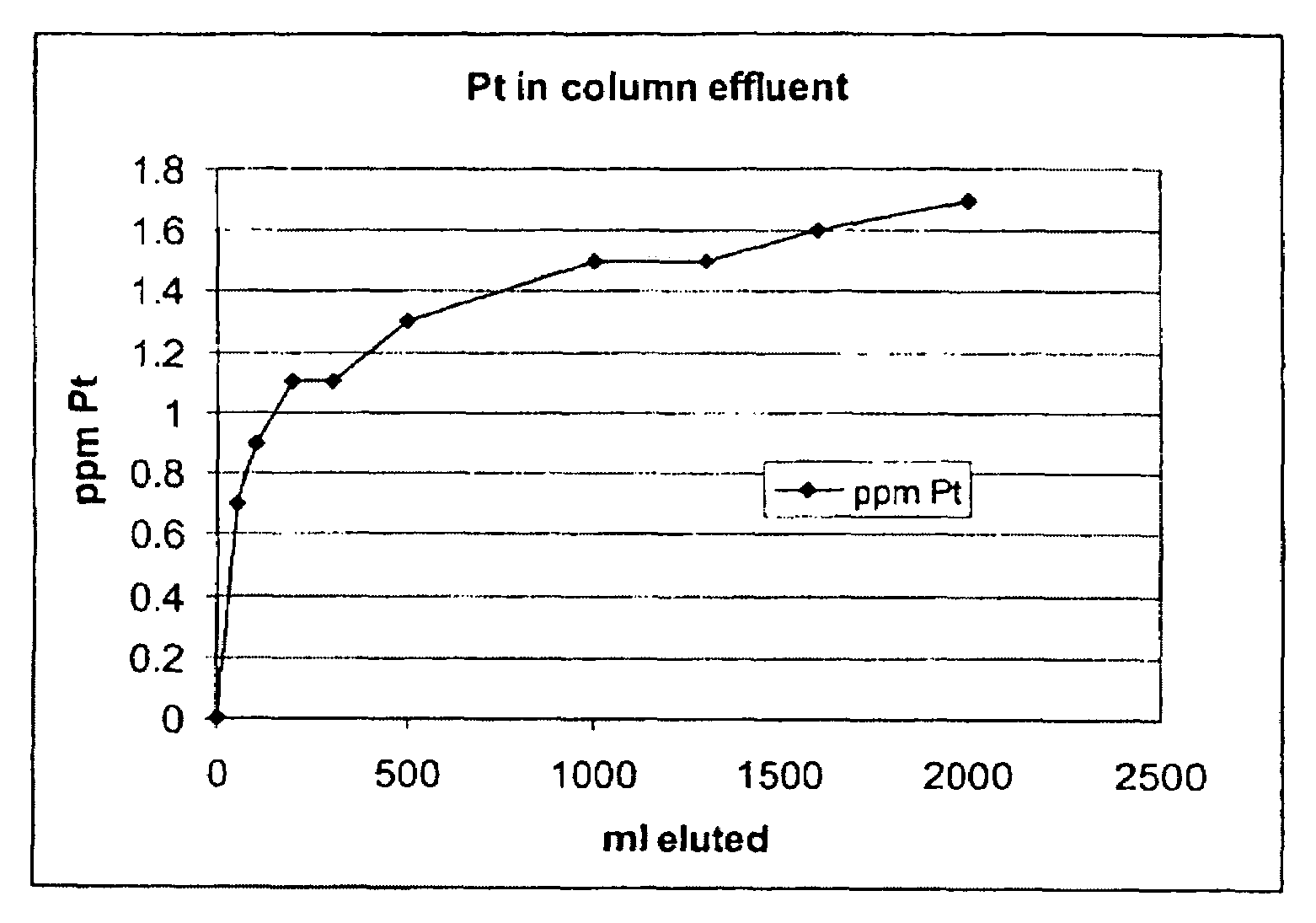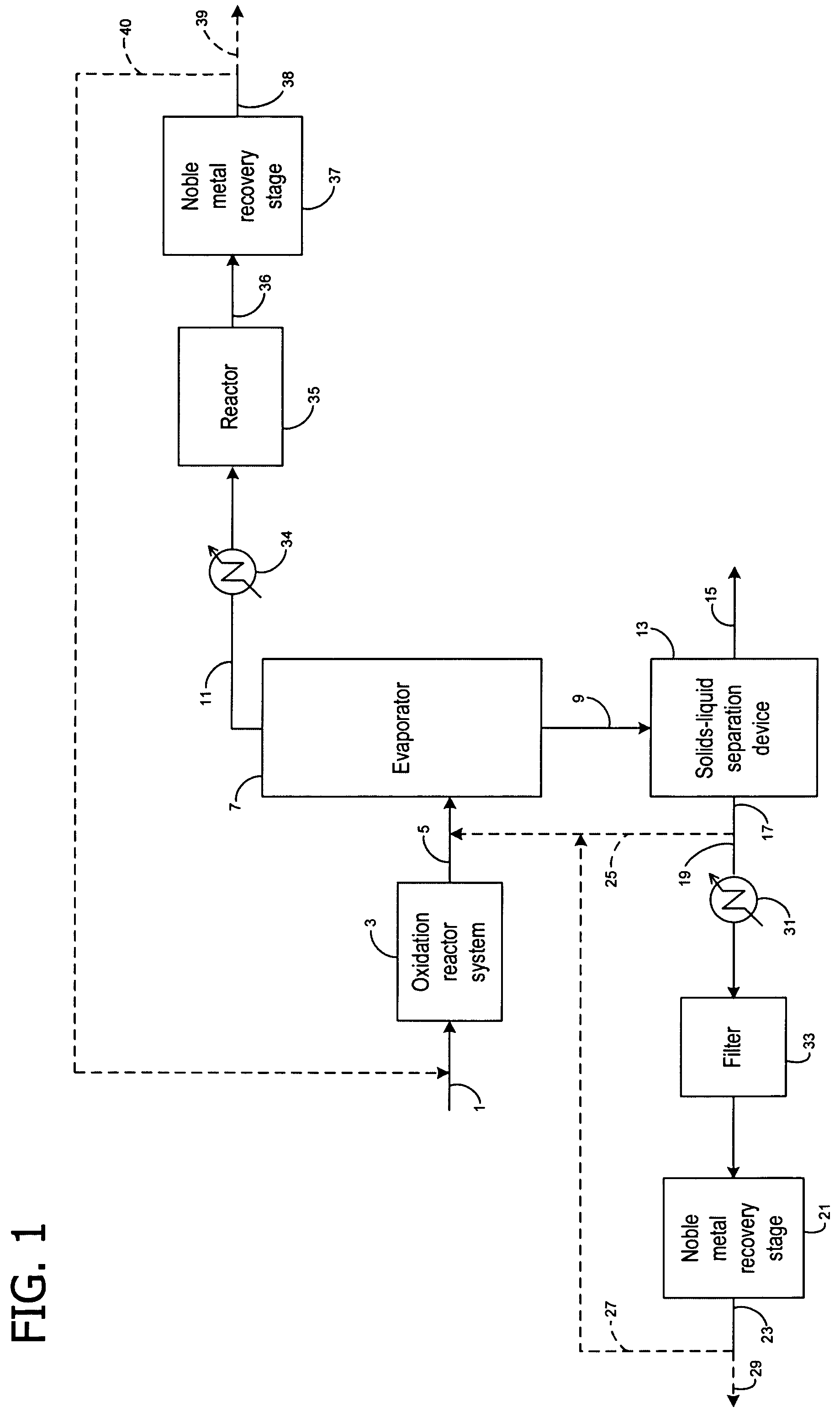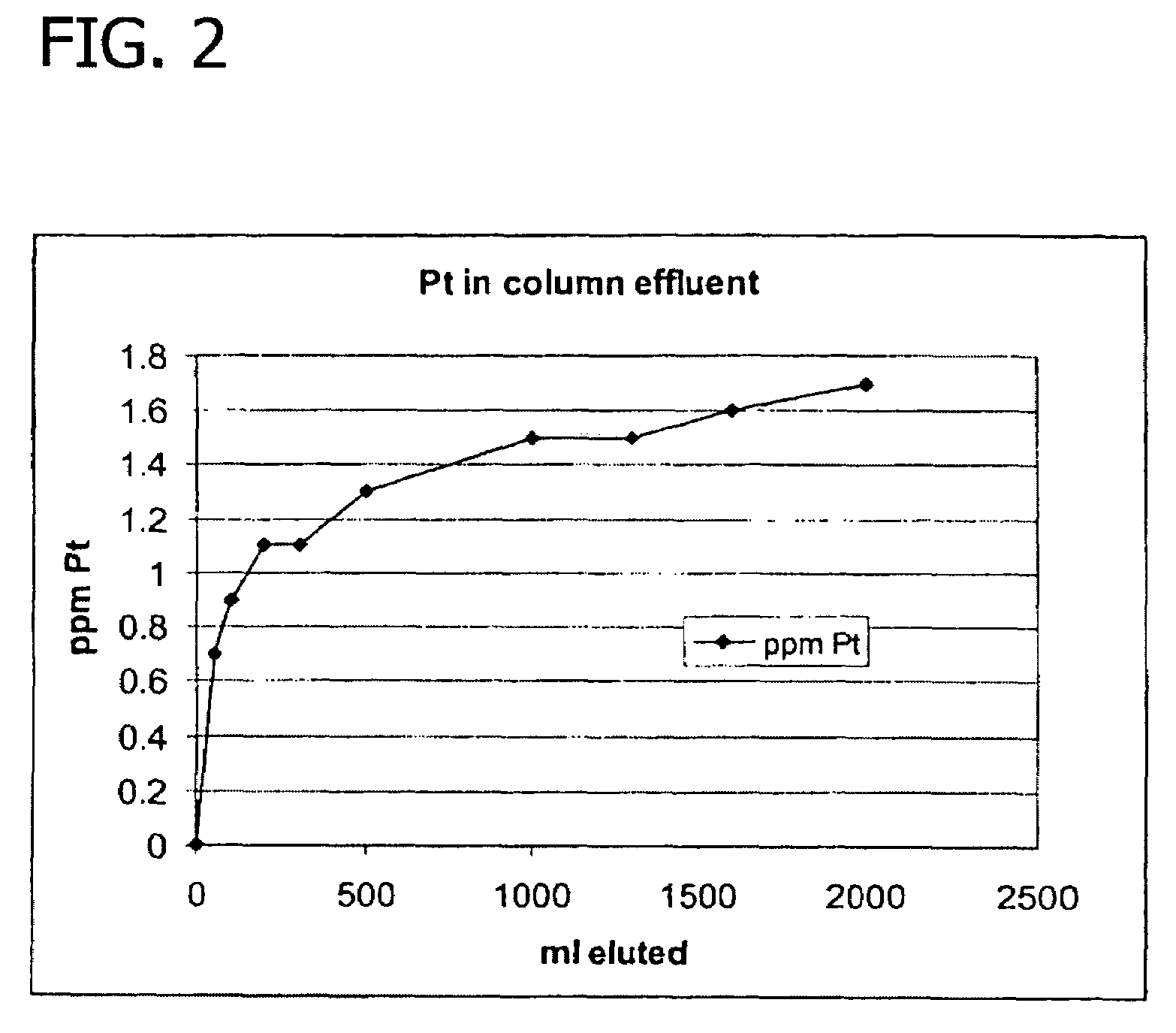Recovery of noble metals from aqueous process streams
a technology of noble metals and aqueous process, applied in the direction of physical/chemical process catalysts, water/sewage treatment by ion exchange, group 5/15 element organic compounds, etc., can solve the undesirable effects of formaldehyde in the reaction product solution resulting from oxidative cleavage of an n-(phosphonomethyl)iminodiacetic acid substrate, undesirable formaldehyde by-product, and reduced n-(phosphonomethyl)glycine yield
- Summary
- Abstract
- Description
- Claims
- Application Information
AI Technical Summary
Benefits of technology
Problems solved by technology
Method used
Image
Examples
example 1
Removal of Solubilized Platinum from an Aqueous Process Stream Using Various Ion Exchange Resins
[0056]Samples of an aqueous process stream containing solubilized platinum were contacted with various ion exchange resins in a laboratory-scale, batch-operated noble metal recovery stage to evaluate their effectiveness in removing the solubilized platinum. The aqueous process stream utilized in this example was filtered, solids-depleted stream 17 (i.e., centrate) obtained from the preparation of N-(phosphonomethyl)glycine by platinum on carbon catalyzed oxidation of N-(phosphonomethyl)iminodiacetic acid in accordance with a process similar to that shown and described in FIG. 1. In addition to the solubilized platinum and N-(phosphonomethyl)glycine product components, such centrates typically also contain low levels of unreacted N-(phosphonomethyl)iminodiacetic acid, formaldehyde, formic acid, N-methyl-N-(phosphonomethyl)glycine (NMG), N-formyl-N-(phosphonomethyl)glycine (NFG), aminomethy...
example 2
Removal of Solubilized Platinum Complexes from Aqueous Solutions Using an Ion Exchange Resin
[0061]Samples of various aqueous solutions containing a solubilized platinum complex listed in Table 2 were contacted with various ion exchange resins in a laboratory-scale, batch-operated noble metal recovery stage to evaluate their effectiveness in removing platinum from the solution containing a solubilized platinum complex.
[0062]For each experiment, 0.5 grams of the ion exchange resin sample was added to 100 mL of aqueous solution containing an initial concentration of solubilized platinum complex. In two experimental runs, the aqueous solution was filtered, solids-depleted stream 17 (i.e., centrate) obtained from the preparation of N-(phosphonomethyl)glycine by platinum on carbon catalyzed oxidation of N-(phosphonomethyl)iminodiacetic acid in accordance with a process similar to that shown and described in FIG. 1. The resulting mixture was stirred for one hour at a temperature of 25° C. ...
example 3
Removal of Solubilized Platinum from an Aqueous Process Stream Using an Ion Exchange Resin
[0066]Samples of an aqueous process stream containing solubilized platinum were contacted with various ion exchange resins in a laboratory-scale, continuously-operated noble metal recovery stage comprising a flow through ion exchange column to evaluate their effectiveness in removing the solubilized platinum. The aqueous process stream utilized in this example was filtered solids-depleted stream 17 (i.e., centrate) obtained from the preparation of N-(phosphonomethyl)glycine by platinum on carbon catalyzed oxidation of N-(phosphonomethyl)iminodiacetic acid in accordance with a process similar to that shown and described in FIG. 1. In addition to the solubilized platinum and N-(phosphonomethyl)glycine product components, such centrates typically also contain low levels of unreacted N-(phosphonomethyl)iminodiacetic acid, formaldehyde, formic acid, N-methyl-N-(phosphonomethyl)glycine (NMG), N-formy...
PUM
| Property | Measurement | Unit |
|---|---|---|
| temperature | aaaaa | aaaaa |
| temperature | aaaaa | aaaaa |
| particle size | aaaaa | aaaaa |
Abstract
Description
Claims
Application Information
 Login to View More
Login to View More - R&D
- Intellectual Property
- Life Sciences
- Materials
- Tech Scout
- Unparalleled Data Quality
- Higher Quality Content
- 60% Fewer Hallucinations
Browse by: Latest US Patents, China's latest patents, Technical Efficacy Thesaurus, Application Domain, Technology Topic, Popular Technical Reports.
© 2025 PatSnap. All rights reserved.Legal|Privacy policy|Modern Slavery Act Transparency Statement|Sitemap|About US| Contact US: help@patsnap.com



